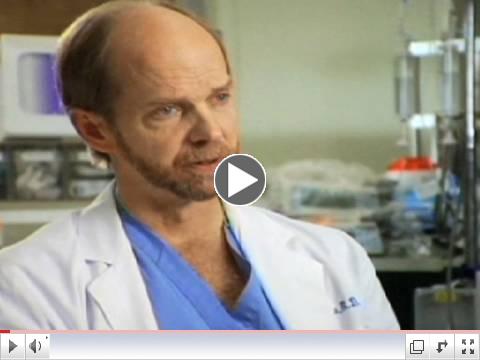|
Chest physiotherapy (CPT) for outpatient acute wheezing
| |
CPT aims at providing a slow and prolonged expiratory time (which allows for alveolar emptying during acute bronco-constriction) with assisted cough techniques to remove bronchial secretions.
An outpatient study of CPT administered to infants seen for an acute wheezing episode, during which a clinical lung score and oxygen saturations were measured at one hour post therapy, indicates no improvement in clinical score, oxygen saturations , no change in (two hour) hospital admission rate or, differences (as compared to a control group) at days 7 and 28 post- CPT treatment.
Acta Paediatrica
|
|
Animal protein intake at 12 months of age and body size at 6 years
| |
A follow-up study of 199 children born in Iceland measured body weight (BMI), length, the amounts of animal and vegetable protein consumed plus serum IGF-1 levels at 12 months and 6 years of age.
It appears that a greater amount of animal protein intake (highest quartile vs lowest quartile) at 12 months, leads in general to a greater weight (BMI) and accelerated length at 6 years of age (in girls a greater protein percent of total calorie intake is associated with higher IGF-1 levels).
Acta Paediatrica
|
|
Back to the Meaningful Use Future: 2014 Looks a Lot Like 2013
|
Guest Blog by Kathy McCoyCMS reversed course with a proposed rule revision to Meaningful Use on May 20, significantly changing the 2014 Meaningful Use reporting requirements. The proposed rule has been hailed as providing relief to eligible providers who were struggling to attest for Stage 2 Meaningful Use, giving providers options for the objectives and measures they can attest for this year. In the chart below...
|
|
|
Download, print and pin this information on your office wall.
-This is a "Must Have" (Ed.)
|
Underwriting Opportunities
|
With a circulation of over 5,000, Updates in Pediatrics offers an excellent opportunity to promote your brand at affordable rates.
|
|
|
Metachronous ("different time") ovarian tumors in pediatric patients with mature ovarian teratoma
"A teratoma is an encapsulated tumor with tissue or organ components resembling normal derivatives of more than one germ layer" e.g.. teeth, bone, eyes, etc, etc. They are usually benign.
A study was undertaken to evaluate the risk for metachronous ovarian tumors in 22 children who underwent oophorectomy for a mature teratoma at age 11.4 years (median), & who were followed for 4.4 years (median).
23% of children with a mature ovarian teratoma develop a contralateral ovarian tumor (3.6 years after primary operation) with a 10 year risk of 66%. Early & repetitive ultrasounds, up to a potential pregnancy age, are needed to facilitate early diagnosis.
Journal of Pediatric Surgery
|
Surfactant deficiency in infants with severe acute viral bronchiolitis
Surfactant content and function of tracheal fluid from 16 infants on ventilators with acute viral bronchiolitis and 16 with normal lungs were evaluated and compared. Infants with severe acute viral bronchiolitis have reduced surfactant amounts and function. Some may benefit from surfactant replacement therapy. Journal of Pediatrics
|
Video Feature
 | | Types of Teratomas - Sacrococcygeal - Cervical - Giant Neck Mass - Fetal Surgery - CHOP (3 of 10) |
via YouTube
|
|
Automated granulocyte (IG) and sepsis evaluation in the newborn infant
The presence of immature granulocytes in the peripheral blood is frequently associated with infection (plus trauma, excessive bleeding, cancer ,etc). Normal ranges for automated IG counts for adults and children are generally given as <1%. A retrospective chart review of 47 infants >35 weeks gestational age who had their clinical history reviewed and two or more automated complete blood counts performed (with differential) within the first 48 hours of life indicates that early neonatal IG levels range from 0%- 8.4% (95th percentile 5.2%) with 70% having IG levels > 1% at < 12 hours of life. In the assessment of early onset neonatal sepsis, the use of normal adult or child reference IG levels in the first 48 hours of life does not seem appropriate. Acta Paediatrica |
Risk factors for cerebrospinal fluid (CSF) shunt infection
CSF shunt infection carries a high morbidity. Certain infants appear to be at highest risk for subsequent infection. A previous retrospective study identified young age and intervening revisions to be associated with a higher risk of subsequent infections (the presence of myelomeningocele was protective).
A large prospective collaborative study (7 pediatric neurosurgical centers) of all children <18 years of age who underwent shunt surgery quantified the risks associated with shunt infection.
11% of children with an initial CSF shunt develop a first shunt infection; revision surgery (standardizing measures to prevent infection) is most significantly associated with the increased infection risk (1 revision increases risk of infection 3-4 fold) & this increases with each further revision (surgeon, site, and other surgical decisions do not appear to play a role).
Journal of Pediatrics
|
|
Updates in Pediatrics is brought to you by:
| |
|
|
|